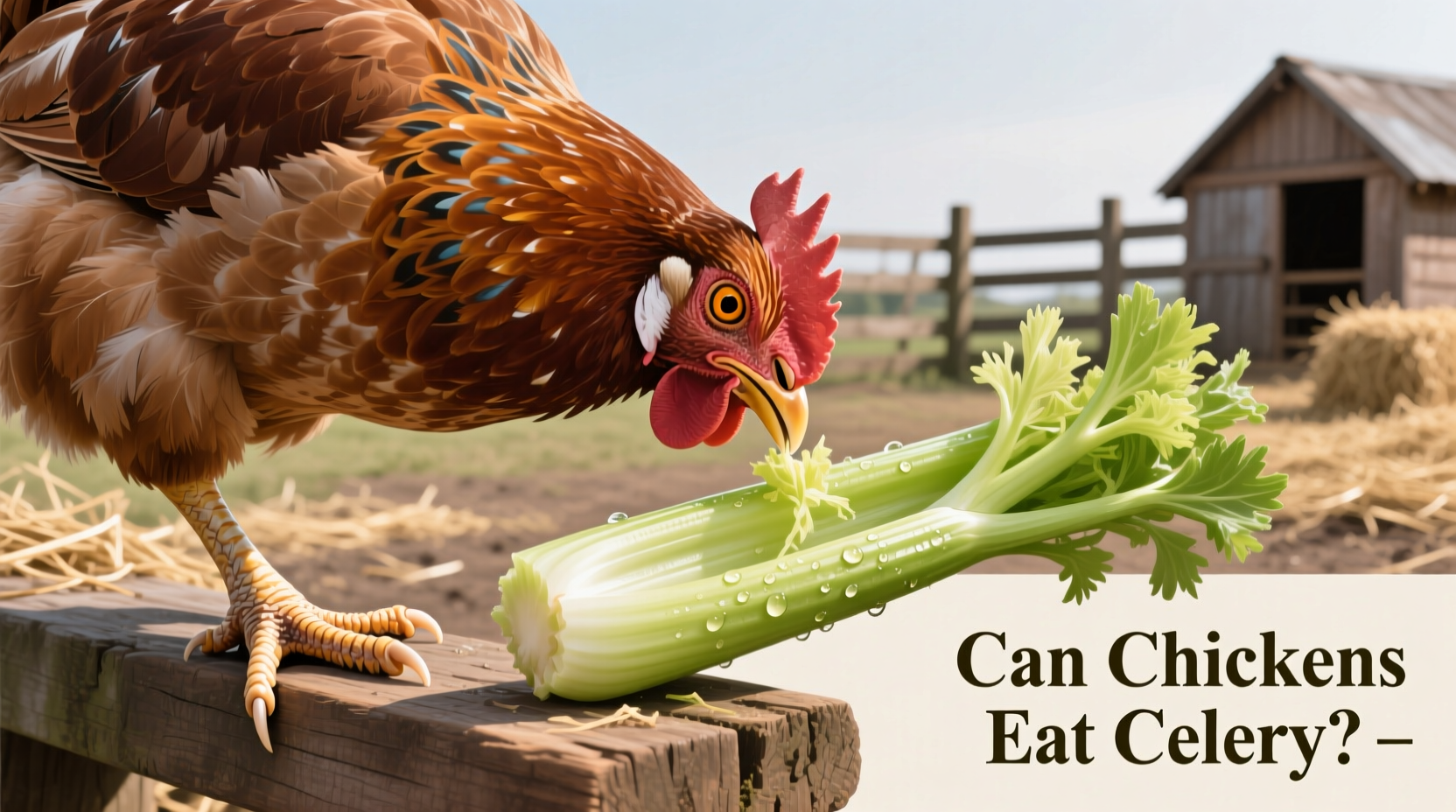Understanding Celery in Chicken Diets: What You Need to Know
Backyard chicken keepers frequently wonder about safe vegetable options for their flock. Celery ranks among the most common kitchen scraps people consider sharing with their birds. This crunchy vegetable offers hydration and nutrients but requires proper preparation to ensure safety. Let's explore the facts every chicken owner should know before adding celery to their feeding routine.
Why Celery Benefits Your Flock (With Proper Preparation)
Celery's high water content (95%) makes it an excellent hydrating treat during warm months. The fibrous stalks contain vitamin K, potassium, and antioxidants that support chicken health when fed appropriately. However, chickens lack teeth and have a different digestive system than humans, which affects how they process fibrous foods.
| Nutrient | Amount per 100g Celery | Benefit for Chickens |
|---|---|---|
| Water | 95g | Hydration support, especially in summer |
| Vitamin K | 29.6μg | Blood clotting and bone health |
| Potassium | 260mg | Electrolyte balance and muscle function |
| Dietary Fiber | 1.6g | Digestive health in moderation |
Safe Preparation Methods Every Chicken Keeper Should Follow
The stringy fibers in celery pose the biggest risk to chickens. Long strands can cause crop impaction or choking hazards. Follow these preparation steps for safe feeding:
- Chop finely: Cut celery into 1/2-inch pieces maximum
- Remove strings: Peel fibrous outer strands from stalks
- Mix with other foods: Combine with leafy greens or grains
- Limit quantity: No more than 1-2 tablespoons per chicken
- Monitor reaction: Watch for 24 hours after first introduction

When Celery Becomes Risky: Important Boundaries
Celery remains safe only within specific parameters. Understanding these context boundaries prevents health issues:
- Frequency limitation: Offer no more than 2-3 times weekly as treats shouldn't exceed 10% of total diet
- Age restrictions: Avoid for chicks under 16 weeks due to higher choking risk
- Health considerations: Skip celery for birds with existing digestive issues
- Preparation necessity: Never feed whole stalks or long strings
According to poultry nutrition guidelines from Purdue University Extension, "Treats should complement, not replace, a complete layer feed. Vegetables like celery provide enrichment but lack balanced nutrition for regular feeding." Their research shows chickens fed excessive fibrous treats often develop nutritional deficiencies over time.
Balancing Your Chicken's Diet: Beyond Celery
While celery makes a healthy occasional treat, your flock needs variety for optimal nutrition. Consider these safe alternatives that provide different nutritional profiles:
- Leafy greens: Kale, spinach, and lettuce (in moderation)
- Vegetable scraps: Carrot tops, cucumber slices, zucchini
- Fruit options: Berries, melon, and apple pieces (no seeds)
- Protein sources: Mealworms, scrambled eggs, plain yogurt
Always introduce new foods gradually. Start with small portions and monitor your chickens' droppings and behavior. Healthy chickens show bright eyes, active movement, and consistent egg production. If you notice changes after introducing new foods, discontinue that item immediately.
Practical Feeding Schedule for Treat Success
Create a simple routine that incorporates celery safely:
- Morning: Standard layer feed (80-90% of diet)
- Midday: Small portion of chopped celery mixed with leafy greens
- Evening: Scratch grains for foraging activity
This feeding pattern ensures your chickens receive complete nutrition while enjoying the benefits of vegetable treats. Remember that treats work best as training rewards or enrichment activities rather than dietary staples.











 浙公网安备
33010002000092号
浙公网安备
33010002000092号 浙B2-20120091-4
浙B2-20120091-4